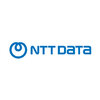
i
Coforge
Filter interviews by
Coforge Linux Administrator Interview Questions and Answers for Experienced
Coforge Linux Administrator Interview Experiences for Experienced
1 interview found
I applied via Recruitment Consulltant and was interviewed before Feb 2021. There were 2 interview rounds.

(1 Question)
- Q1. Cluster and basic linux command should be know
Interview Preparation Tips
Linux Administrator Jobs at Coforge
Top trending discussions






Interview questions from similar companies

I applied via Naukri.com and was interviewed in Nov 2019. There were 5 interview rounds.
Interview Questionnaire
3 Questions
- Q1. Be clear about basic Linux concepts like user administration, basic activities like how to clear disk space, daily activities to begin with
- Q2. I was asked questions on ssh key authentication, passwordless authentication, Booting, kernel related issues,
- Q3. Patching and the process of how I do patching
- Ans.
Patching is the process of updating software to fix vulnerabilities and improve performance.
Patching involves identifying and applying updates to software systems.
It is important to regularly check for patches and updates from vendors.
Patching can be done manually or through automated tools.
Before applying patches, it is crucial to test them in a controlled environment.
Patching should be performed in a planned and syst...
Interview Preparation Tips
The interview went for more than one hour.
Feel free to ask questions if you do not understand the questions.
Skills evaluated in this interview

Linux System Administrator Interview Questions & Answers
NTT Data Information Processing Servicesposted on 13 Jan 2023
I applied via LinkedIn and was interviewed in Jul 2022. There were 2 interview rounds.

(2 Questions)
- Q1. What is Networking how dns cluster works in Linux?
- Ans.
Networking is the practice of connecting devices to share resources. DNS cluster in Linux is a group of DNS servers that work together.
Networking involves connecting devices to share resources such as files, printers, and internet access.
DNS cluster in Linux is a group of DNS servers that work together to provide high availability and load balancing for DNS queries.
DNS cluster can be configured using tools like BIND an...
- Q2. What are backups? what are ports?
- Ans.
Backups are copies of data that can be used to restore the original data in case of data loss or corruption. Ports are communication endpoints used for network connections.
Backups are essential for data recovery in case of disasters or system failures
Ports are identified by numbers and are used to establish connections between devices
Common ports include HTTP (80), HTTPS (443), SSH (22), FTP (21), etc.
Interview Preparation Tips
Skills evaluated in this interview

I applied via Approached by Company and was interviewed before Sep 2022. There were 3 interview rounds.

(4 Questions)
- Q1. RAID configuration
- Q2. Server configuration
- Q3. Lotus notes/mail configuration
- Q4. Network Monitoring
(2 Questions)
- Q1. Location details
- Q2. Compentation details

Linux Server Administrator Interview Questions & Answers
DXC Technologyposted on 20 Apr 2022
(1 Question)
- Q1. Lvm, troubleshooting,
(1 Question)
- Q1. Manager round, he asked about the previous work
(1 Question)
- Q1. What are your salary expectations?
Interview Preparation Tips

Interview Questionnaire
3 Questions
- Q1. How to check server performance, incase application running on the server performing slow, what will you do ?
- Ans.
To check server performance, monitor CPU, memory, disk usage. Use tools like top, htop, iostat. Check logs for errors.
Monitor CPU usage with top or htop command
Monitor memory usage with free or vmstat command
Monitor disk usage with df or iostat command
Check logs for errors related to the application
Use performance monitoring tools like Nagios or Zabbix
- Q2. How to actiavate a Volume Group or LV ?
- Ans.
To activate a Volume Group or LV, use the vgchange or lvchange command.
Use the vgchange command to activate a Volume Group.
Use the lvchange command to activate a Logical Volume.
Specify the name of the Volume Group or Logical Volume as an argument.
Use the -a y option with vgchange to activate all Volume Groups.
Use the -a y option with lvchange to activate all Logical Volumes in a Volume Group.
- Q3. How would you present a SAN LUN to Solaris LDOM or CDOM ?
- Ans.
To present a SAN LUN to Solaris LDOM or CDOM, we need to follow a few steps.
First, we need to identify the SAN LUN and the target LDOM/CDOM.
Then, we need to create a logical device using the format command.
Next, we need to configure the LUN using the cfgadm command.
Finally, we need to add the LUN to the LDOM/CDOM using the ldm add-vdsdev command.
Skills evaluated in this interview

I applied via Referral and was interviewed before Nov 2021. There were 2 interview rounds.

(2 Questions)
- Q1. 1. What Dns dhcp, server, ad,? 2. How to do Printer configuration 3. How to do License configuration 4. What type Server installation 5. Windows basic
- Ans.
Questions related to DNS, DHCP, server installation, printer and license configuration, and Windows basics for a System Administrator role.
DNS: Domain Name System translates domain names to IP addresses.
DHCP: Dynamic Host Configuration Protocol assigns IP addresses to devices on a network.
Server installation: Different types of server installations include file servers, web servers, database servers, etc.
Printer config...
- Q2. How to do printer configuration
- Ans.
Printer configuration involves setting up the printer hardware and software to enable printing from a computer.
Connect the printer to the computer and install the necessary drivers
Configure printer settings such as paper size, print quality, and orientation
Set up printer sharing if necessary
Test the printer to ensure it is working properly
Interview Preparation Tips
Ad
Dns
Dhcp
Security group
Sever
Storage
Skills evaluated in this interview

Interview Questionnaire
1 Question
- Q1. Technical questions

I applied via Naukri.com and was interviewed in Nov 2019. There were 5 interview rounds.
Interview Questionnaire
3 Questions
- Q1. Be clear about basic Linux concepts like user administration, basic activities like how to clear disk space, daily activities to begin with
- Q2. I was asked questions on ssh key authentication, passwordless authentication, Booting, kernel related issues,
- Q3. Patching and the process of how I do patching
- Ans.
Patching is the process of updating software to fix vulnerabilities and improve performance.
Patching involves identifying and applying updates to software systems.
It is important to regularly check for patches and updates from vendors.
Patching can be done manually or through automated tools.
Before applying patches, it is crucial to test them in a controlled environment.
Patching should be performed in a planned and syst...
Interview Preparation Tips
The interview went for more than one hour.
Feel free to ask questions if you do not understand the questions.
Skills evaluated in this interview

Senior Linux System Administrator Interview Questions & Answers
NTT Data Information Processing Servicesposted on 8 Nov 2019
I applied via Walk-in and was interviewed in May 2019. There were 5 interview rounds.
Interview Questionnaire
17 Questions
- Q1. Explain booting process?
- Ans.
Booting process is the sequence of events that occur when a computer system is turned on.
BIOS/UEFI firmware initializes hardware components
Bootloader loads the kernel into memory
Kernel initializes system processes and drivers
Init system starts user space processes and services
Graphical user interface (GUI) is loaded for user interaction
- Q2. What version of redhat have you worked on?
- Ans.
I have worked on Red Hat Enterprise Linux versions 6, 7, and 8.
I have experience with installation, configuration, and maintenance of Red Hat Enterprise Linux servers.
I have worked with Red Hat Enterprise Linux 6, 7, and 8 in both physical and virtual environments.
I have experience with package management, user management, and security hardening on Red Hat Enterprise Linux.
I have also worked with Red Hat Satellite for ...
- Q3. If disk is full what will u do?
- Ans.
Free up disk space by identifying and removing unnecessary files.
Identify large files and delete them
Remove old log files
Clear cache and temporary files
Compress large files
Move files to another disk or server
- Q4. What is sticky bit and sgid?
- Ans.
Sticky bit and SGID are special permissions in Linux file system.
Sticky bit is denoted by 't' in file permission and restricts deletion of files in a directory by non-owners.
SGID is denoted by 's' in file permission and sets the group ID of newly created files to the group of the parent directory.
SGID can also be used on executable files to allow users to run them with the permissions of the group that owns the file.
SG...
- Q5. Explain me what will u do if the server is not coming up?
- Q6. Based on resume few questions they will ask like how will u delete user along with home directory?
- Q7. What is the difference between zombie and orphan?
- Ans.
Zombie is a terminated process that still has an entry in the process table, while orphan is a child process whose parent has terminated.
Zombie process is waiting for its parent to read its exit status
Orphan process is adopted by init process (PID 1)
Zombie process can be removed by killing its parent process
Orphan process can continue running even after its parent has terminated
- Q8. Explain me Raid? how many raid are there? which raid is best to use?
- Ans.
RAID stands for Redundant Array of Independent Disks. It is a data storage technology that combines multiple physical disks into a single logical unit.
There are several types of RAID, including RAID 0, RAID 1, RAID 5, RAID 6, RAID 10, and more.
RAID 0 offers no redundancy but provides improved performance by striping data across multiple disks.
RAID 1 provides mirroring of data across two disks, offering redundancy but n...
- Q9. Explain me what is network bonding?
- Ans.
Network bonding is the process of combining multiple network interfaces into a single logical interface.
Network bonding provides redundancy and increased bandwidth.
There are different bonding modes such as active-backup, balance-rr, and LACP.
Bonding can be configured using the ifenslave utility or through network configuration files.
Examples of network interfaces that can be bonded include Ethernet, Wi-Fi, and InfiniBa...
- Q10. Difference between systemd and services?
- Ans.
systemd is a system and service manager while services are individual programs that run in the background.
systemd is responsible for managing the system's startup and shutdown processes
services are individual programs that run in the background and can be managed by systemd
systemd can start, stop, restart, enable, and disable services
services can be configured to start automatically at boot time using systemd
systemd pr...
- Q11. Why are you looking for job change? since this is senior position role are u willing to accept the challenges and take it with you?
- Q12. Tell me about ur roles and resposibility in previous company?
- Q13. Do u have knowledge on scripting? since we need people having scripting knowledge? did u have clustering knowledge?
- Q14. NExt round technical manager round . explain me booting process in brief ? what is hard and soft link? How much salary are you expecting ? Is is negotiable? 10hrs duty , no wfh , rotational shift are you...
- Q15. 3rd round was project executive round they will take on skype and see ur expressions and will ask what is the challenge u have faced? what are values that you think should be followed in company? Please i...
- Q16. 4th round for salary discussion hr round and doc verification . there are no variable only fixed salary
- Q17. Note make sure u take offer letter and in that if hr mention any bonus on call take it in your offer letter in written that this much bonus hr is giving.
Interview Preparation Tips
4 rounds
1st round was technical
2nd round was technical manager round
3rd round was Project executive round on skype
4th round was Hr round for salary discussion
Skills evaluated in this interview
Coforge Interview FAQs
Tell us how to improve this page.
Coforge Interviews By Designations
- Coforge Senior Software Engineer Interview Questions
- Coforge Software Engineer Interview Questions
- Coforge Technical Analyst Interview Questions
- Coforge Graduate Engineer Trainee (Get) Interview Questions
- Coforge Software Developer Interview Questions
- Coforge Senior Associate Interview Questions
- Coforge Senior Test Engineer Interview Questions
- Coforge Test Engineer Interview Questions
- Show more
Interview Questions for Popular Designations
- Linux System Administrator Interview Questions
- Senior Linux Administrator Interview Questions
- Senior Linux System Administrator Interview Questions
- Linux Support Engineer Interview Questions
- Linux Engineer Interview Questions
- Linux System Engineer Interview Questions
- Linux Server Administrator Interview Questions
- Linux Administrator L2 Interview Questions
- Show more
Linux Administrator Interview Questions from Similar Companies
Fast track your campus placements
Coforge Linux Administrator Reviews and Ratings
based on 3 reviews
Rating in categories
1-2 Yrs
₹ 7-10 LPA
|
Senior Software Engineer
4.8k
salaries
| ₹6.2 L/yr - ₹25 L/yr |
|
Technical Analyst
2.5k
salaries
| ₹9.5 L/yr - ₹38.4 L/yr |
|
Software Engineer
2k
salaries
| ₹2.2 L/yr - ₹9.5 L/yr |
|
Senior Test Engineer
1.8k
salaries
| ₹5 L/yr - ₹20.5 L/yr |
|
Technology Specialist
1.2k
salaries
| ₹11.9 L/yr - ₹42 L/yr |

Capgemini

Cognizant

Accenture

Infosys
Calculate your in-hand salary
- Home >
- Interviews >
- Coforge Interview Questions >
- Coforge Linux Administrator Interview Questions for Experienced












